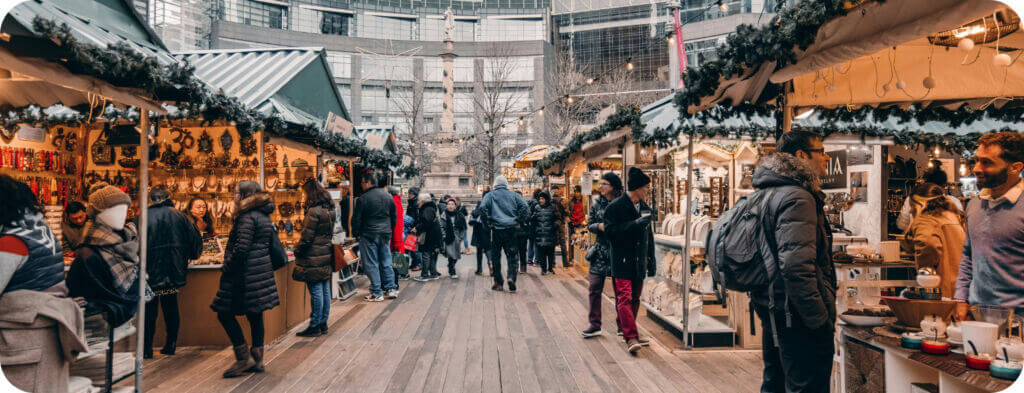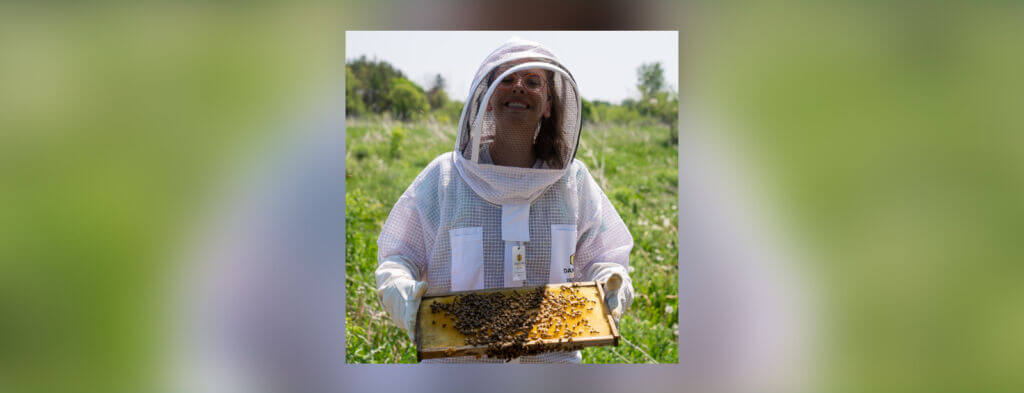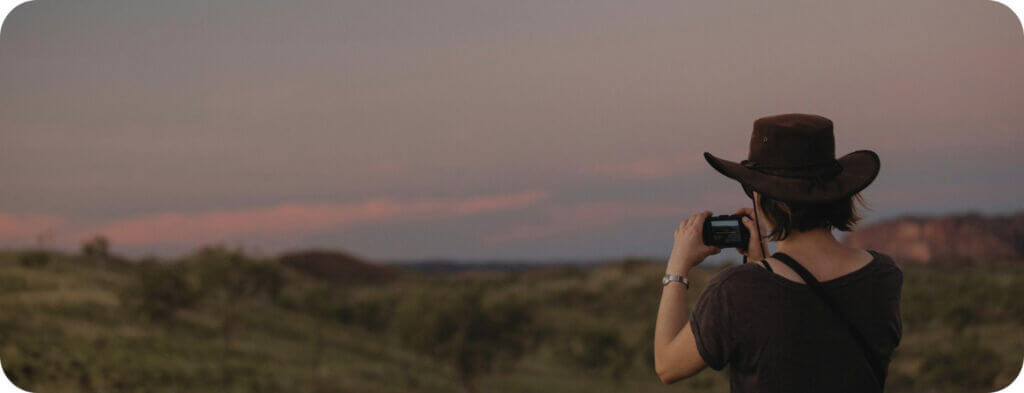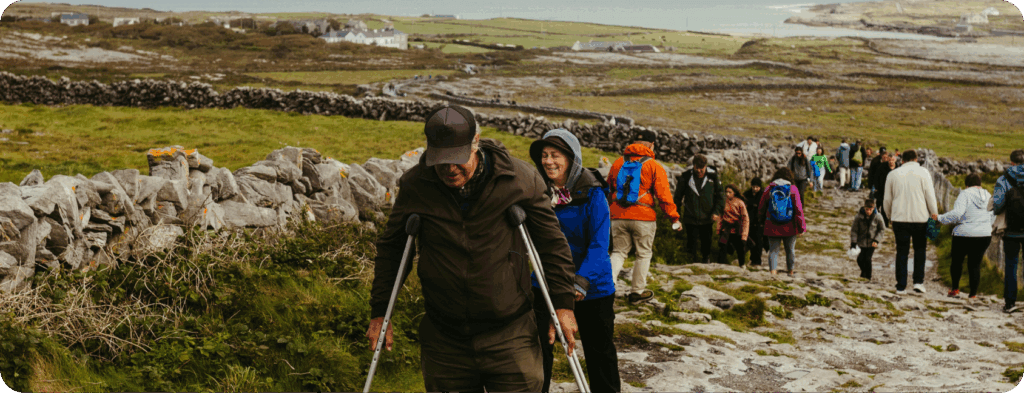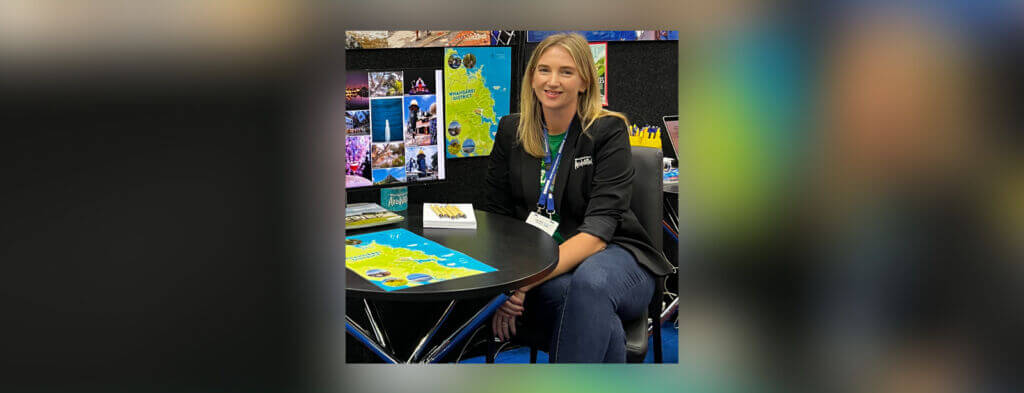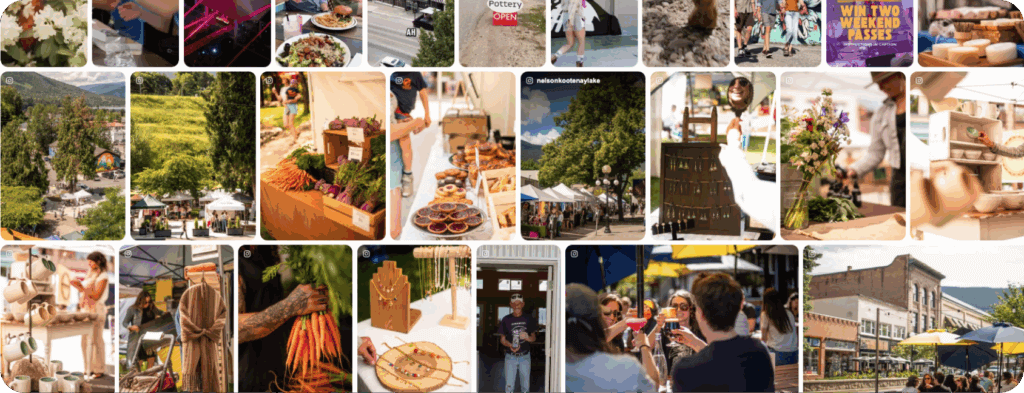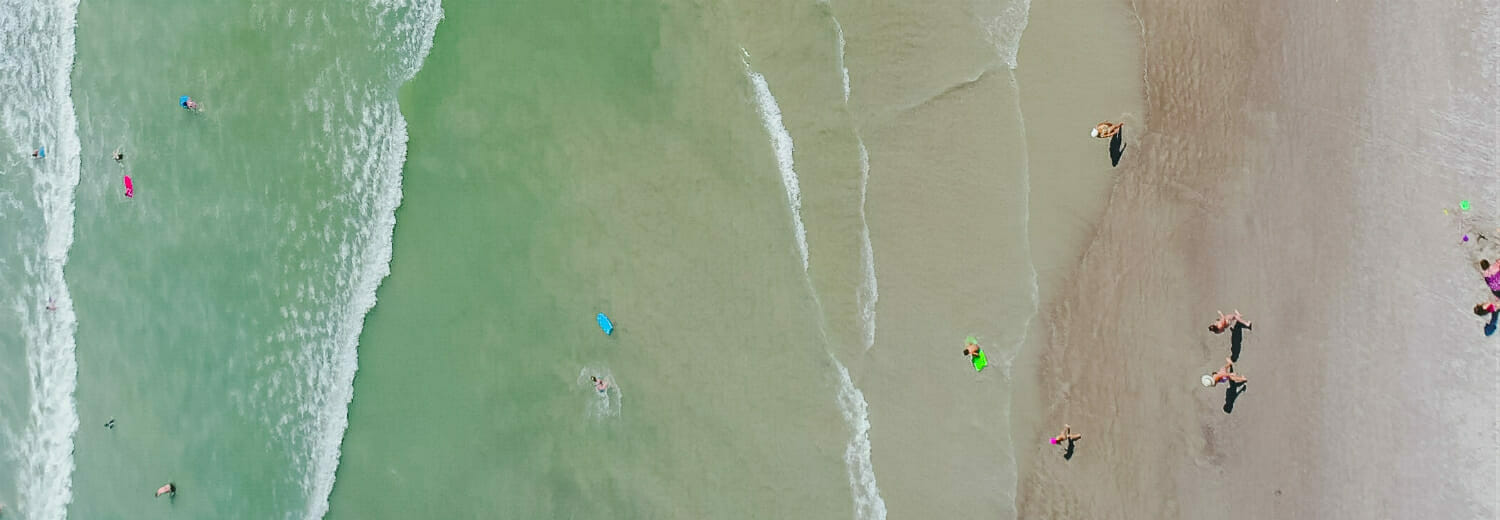
For DMOs, a new year and a new season are usually triggers for a fresh destination marketing campaign.
You’re always looking for a fresh angle, something new to try, and a new way to wow prospective travelers. You’re always looking for creative inspiration.
That’s why we’ve taken the time to create this list of 11 amazing travel marketing campaigns, look at what made them successful, and pull out what you can learn from them.
From horse-filmed promotional videos to talking bridges, there’s no limit to the ingenuity of DMOs when promoting their destinations—and to the campaigns you can create.
1 | South African Tourism: 24 Hours of Wow
Visitors to South Africa frequently focus only on going on safari, and don’t realize the wealth of other amazing activities that are available. To show just how varied and wonderful their country really is, South Africa Tourism developed a visually immersive microsite called “24 Hours of Wow” that featured 144 six-second video clips, each representing an activity or attraction. Visitors could then customize a personalized 24-hour South African adventure by selecting video clips that represented activities for each of the hours of the day, or let the shuffle option surprise them.
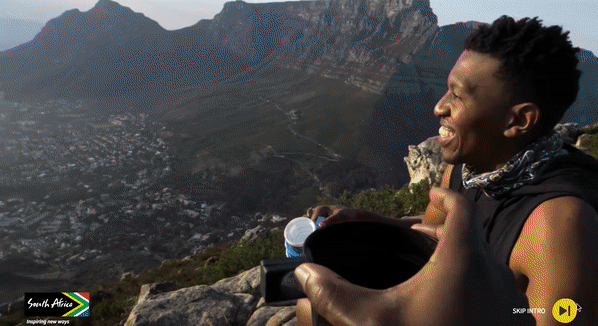
Lessons from this destination marketing campaign
Harnessing the popularity of video allowed the South African Tourism board to immerse web visitors with a plethora of possibilities — allowing visitors to browse and explore all the options made it interactive and engaging. Immediately after launching, the average time on site was close to ten minutes as visitors played with the variety of videos available. (If that isn’t evidence of the power of personalization, what is?)
The best part? 60% of the b-roll used was repurposed from what they’d already had on hand in their content library.
2 | Visit Omaha: Bob the Bridge
Connecting Omaha and Iowa lies the bridge with the most personality that you’ll ever meet: Bob the Bridge. Locals were initially unhappy with the 3,000-foot curved suspension bridge, dismissing it as leading to nowhere and disregarding its value as an attraction in and of itself.
But rather than trying to change their minds, Visit Omaha decided to let the bridge speak for himself. By giving Bob his own social media accounts and video blog, in which his dry, humorous personality shines through, the team was able to completely change the public’s perception.
Now, visitors from both states—and even further abroad—come to take selfies at the state line (now known as Bobbing) and share their experiences with Bob. The team is able to keep the conversation going using CrowdRiff, by tracking and responding to instances of #ItHappensOnBob posted on social media as well as by having a constantly updating feed of UGC on their website.
Lessons from this destination marketing campaign
Sometimes the craziest ideas can really pay off. By creating a tongue-in-cheek personality for their bridge—something no other destination had done—Visit Omaha has effectively created their own tourist attraction and talk trigger. Plus, by showing off a gallery of the UGC people are sharing with Bob on their website, they amplify the social voices of happy visitors and continue to extend that conversation.
3 | Visit Lex: Horse-Filmed Commercials
You’ve heard of user-generated content, but what about horse-generated? In Lexington, Kentucky, home of the Kentucky Derby, every day revolves around the horse farms that have made them famous. However, getting visitors to take more than a casual interest in them can be a challenge.
So, Visit Lex decided to give them a horse’s-eye-view of what really happened on the farm. By strapping a GoPro to their thoroughbreds, they got hours of video footage—filmed entirely by the horses—that gave visitors the chance to put themselves in their horseshoes. The most popular was a video of a mother watching her foal—just like any human parent might film their child.
Lessons from this destination marketing campaign:
Horses are this city’s unique differentiator. By putting them on at the forefront of their campaign and letting them take the reins, it’s easy to create an emotional connection with these creatures and their homeland. Showing visitors what you really love about your destination is the perfect way to get them as excited about it as you are!
4 | Explore Georgia: #ExploreGeorgiaPup

You’ve heard of family-friendly travel… But what about puppy-friendly? When Explore Georgia realized that a large portion of their target demographic were millennial pet owners, the perfect destination marketing campaign was born.
To draw dog owners from neighboring states in for a visit, they created the #ExploreGeorgiaPup campaign. They created travel guides for pet owners and featured images of visiting dogs, sharing it all on social media to show that Georgia was the perfect place to visit with your dog.
And the spotlight on man’s best friend paid off. They saw over 3,000 uses of the hashtag in under a year, leading over 14,000 visitors to their website. They also reached over 10,000 followers on their pet-friendly travel Pinterest board.
Lessons from this destination marketing campaign
#ExploreGeorgiaPup is the perfect example of a campaign that’s both useful to travelers as well as being visually appealing (who doesn’t love a good puppy pic?). By sharing travel tips and making it easy for pet owners to visit, Explore Georgia was able to generate lots of love on social media—which in turn made it easier to source more and more great user-generated content to keep the social conversation growing.
5 | Explore St. Louis, STL.Live
Although Explore St. Louis was having no trouble attracting families to their city, they also wanted to reach out to millennials. When they realized that what this demographic was really looking for were lesser-known attractions that would help them get to know the city better, they harnessed a new content strategy, including a UGC-powered microsite and quick interviews with local influencers about their favorite places in St. Louis—completely unscripted.
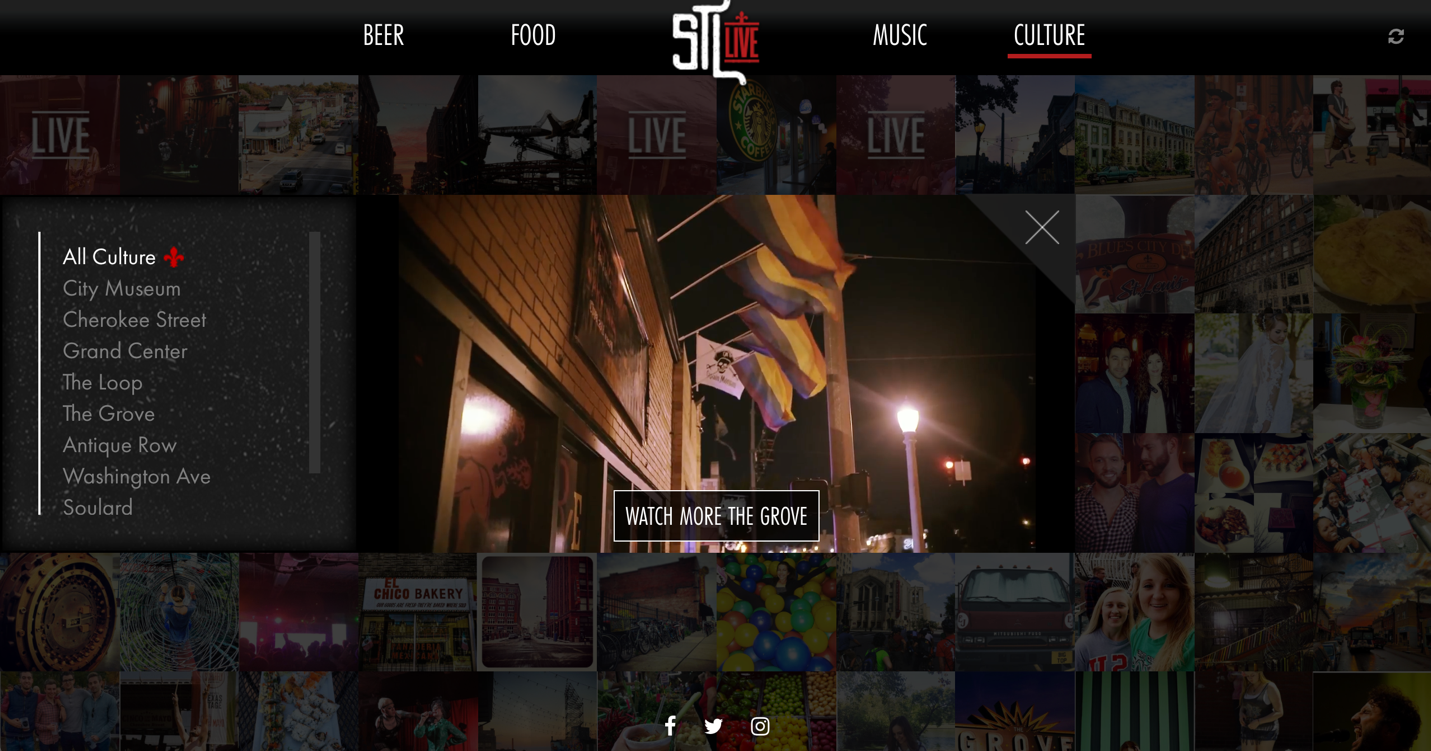
Lessons from this destination marketing campaign:
Explore St. Louis knew that their target demographic wouldn’t be impressed by traditional marketing. By reaching out to influencers who resonated with millennials, they were able to give a portrait of their city that was described from the perspective of real people, rather than marketers.
That ties into another key factor in this campaign’s success: its authenticity. By showcasing user-generated content, they made their audience feel as though they were really part of the St. Louis community and could experience it like a local, rather than a tourist. To create a connection with visitors, take advantage of visual user-generated content, like Explore St. Louis did.
6 | Tourism Ireland: Doors of Thrones
Much of Game of Thrones was filmed in Northern Ireland, most particularly at the famous Dark Hedges trail. After a storm ripped through the country and knocked down a couple of trees, Tourism Ireland realized that they had the perfect opportunity to turn the lumber into something fans would love to see.
Through their exclusive partnership with Game of Thrones, they created “Doors of Thrones”, each one of which matched a specific episode in the upcoming season.
And it paid off. The videos they developed to unveil the doors were viewed a combined 17.5 million times, engaged with 250,000 times, achieving a combined total reach of 126 million. Even now that the season is long over, visitors still flock to see the doors and get stamps on their Game of Thrones tour passports—something they can’t do at any other destination.
Lessons from this destination marketing campaign:
The filming locations of Game of Thrones were already a big attraction in the area, so taking advantage of them allowed Tourism Ireland to increase their cachet even more. When thinking about your next campaign, it’s about not only knowing your destination, but knowing what other people are saying about it and associate with it.
7 | Visit Pittsburgh, UGC everywhere
Although Pittsburgh has long had a reputation as a smoky, industrial city, in modern days it’s anything but. To show how their city has been transformed in recent years, Visit Pittsburgh turned to the power of user-generated content. By getting local influencers to blog for them and sourcing authentic imagery through CrowdRiff of the wide variety of activities and events available, their site is always revealing new sides of their city.
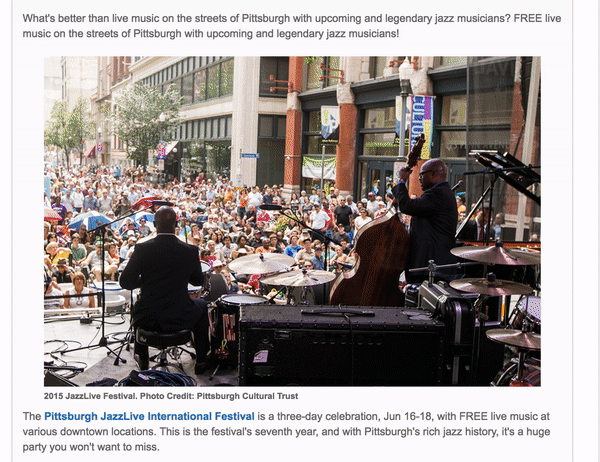
Lessons from this destination marketing strategy:
Although this is more of an overarching strategy than a specific campaign, it’s one that’s well worth noting for all DMOs. Using CrowdRiff to source user-generated content for their website visuals significantly reduced time spent looking for pictures on the Visit Pittsburgh team’s part, and also allowed them to showcase a larger volume. They’ve been able to raise the profile of their brand and transform perceptions of their city, just by showing people the authentic photos of their changed destination with UGC.
8 | Visit Houston: Hola Houston
Although Houston never had a problem attracting visitors from within driving distance, they realized that to broaden their appeal, they’d need to adopt a new strategy. They already had quite a few visitors coming from Mexico, but to connect with them more deeply, they decided to create a Spanish-language website that would give Spanish speakers a more personalized glimpse into the city. The Hola Houston campaign involved painting murals in their key Mexican markets, and partnering with Mexican influencers, who shared their explorations through the city on social media as well as posting them on the site.

Lessons from this destination marketing campaign:
Hola Houston tapped into a previously overlooked market and created a better experience for them—getting a yearly increase of 300,000 visitors from Mexico in the time since their campaign. Realizing where your current visitors are underserved and developing a way to welcome them in, or simply developing a more personalized message for different market segments, is a great way to deepen your relationship with that particular demographic.
9 | Faroe Islands: Sheep View
The Faroe Islands, an archipelago located between Iceland, Norway, and Scotland, was so small that it wasn’t even included on most world maps or even Google Street View. However, they knew that to attract more visitors, they’d need to get on the map.
So, they turned to their most unique attribute: the fact that they have more sheep than people. To give visitors a glimpse of what awaited them on the islands, they strapped 360-cameras to some of their 80,000 sheep as they wandered around. The resulting “sheep map” did more than get Google Maps’ attention: it also won 3 Lions at the 2017 Cannes Advertising Festival, amongst several other awards.
Lessons from this destination marketing campaign
The Faroe Islands might not have had much money… but they did have a lot of sheep and breathtaking scenery. They needed a way to show people visually what their collections of islands had to offer, and they did so by combining these two strengths. They dove into virtual reality video to visually captivate people from all over the world, and cleverly used their sheep to show off their charm while sparking conversation and the attention of the press.
10 | Nelson and Kootenay Lakes: #FindingAwesome Contest
The Nelson and Kootenay Lakes Tourism team has a very specific vision of the visitors they want to attract: “free spirits and well-rounded squares”, in the words of their positioning statement. However, figuring out how to market to this very specific personality type can be difficult, particularly given the wide variety of activities available in the area.
To group all of their pastimes together under one umbrella, they created the #FindingAwesome contest. Visitors to the area were invited to submit posts on social media using the hashtag, with winners receiving cash prizes and being posted on their blog. Even those that don’t win were featured on their “Finding Awesome” microsite, using CrowdRiff to request rights to photos and also to power a UGC gallery with numerous photos and videos to explore.
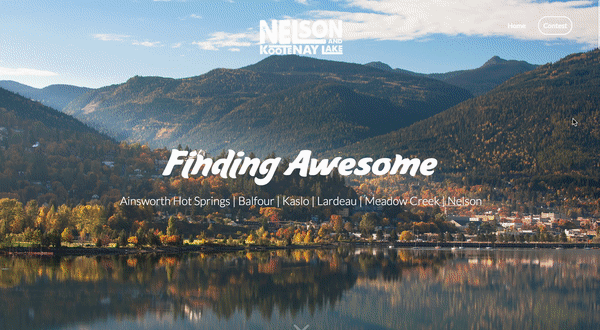
The campaign was so popular that local businesses even started running similar campaigns concurrently, such as the area microbreweries’ “Fermenting Awesome” event.
Lessons from this destination marketing campaign
Focusing on their ideal visitor’s interests, rather than on their demographics, helped Nelson and Kootenay Lakes Tourism create a message that was directed specifically at them. By running a social media contest, they really spread that brand message and encouraged visitors and locals alike to adopt it, which was further amplified by using those UGC images in their own marketing and blog posts.
11 | Travel Wyoming: That’s WY Stories
Although Wyoming is already well-known for its natural wonders, visitors from beyond driving distance can sometimes fail to see what really makes it unique. Although Travel Wyoming’s marketing already featured their gorgeous outdoor views, it wasn’t being told from the personal, individual perspective.
So, to convey more of Wyoming’s personality, they created a series of videos with some of the state’s most interesting experts—such as rope makers, ranch owners and dogsledders—that shared a more intimate view of the state.
Developing this human connection paid off. Sharing the stories of the people that make Wyoming special lead to a direct increase in visitors to the state and increased national awareness of just “wy” Wyoming was worth visiting.
Lessons from this destination marketing campaign
Sometimes, just sharing beautiful photos of the landscape isn’t enough. Getting up close and personal with the people who truly make your destination great can help differentiate you from other locations. Combining unique, personal storytelling along with visually captivating, cinematic videos really resonated with viewers, with some videos getting over a million views.
Feeling inspired? There’s more to see.
Read what five forward-thinking DMOs like Visit Arizona and San Francisco Travel have done to create website content for travelers that is targeted, unique, and inspiring in our latest eBook: Making Your Website an Insider’s Guide to Your Destination.

